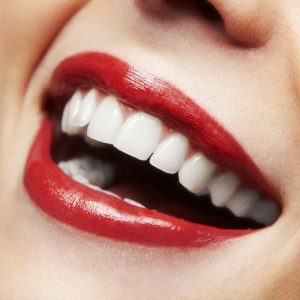Some people are just born with much more yellowish teeth compared to others. That’s a fact. It’s also a known fact that our teeth also become yellow as we age. Though, there are also other factors affecting the color of our teeth, such as:
- Smoking or chewing tobacco.
- Drinking certain beverages such as red wine, tea, coffee and others.
- Eating cherries, blueberries and other highly pigmented types of food.
- The hardening of plaque resulting from the lack of proper oral hygiene.
Whitening Your Teeth
Frequent dental cleanings can easily remove most of the stains caused by certain food, drinks and tobacco. Using a whitening toothpaste can also help remove such stains in between visits to the dentists. Though, if your stains have been present for years, simply cleaning and brushing just won’t cut it.
Stubborn stains will have to be removed either by bleaching, bonding or capping. All of these methods are considered by dental care experts as very safe and effective. However, it’s usually up to your dentist to determine which type of treatment is based on both the results you want to achieve and the current state of your teeth.
How Teeth Whitening Works
Bleaching requires the use of tooth-bleaching gels to oxidize out the stain and can be done either by the dentist or at home.
A common side effect during the process is for teeth to become slightly more sensitive than usual.
- At-home whitening. This is usually the preferred method by many people since it’s much more convenient. This is done by letting your dentist take an impression of your teeth and making a custom-fitted tray. You’ll then have to fill the tray with whitening gel and wear it for two hours a day for as long as two weeks. If done correctly, at-home whitening can be a very effective teeth whitening solution.
- In-office whitening. This type of procedure is done in the dentist’s office. Each visit takes somewhere around 30 minutes to one hour and multiple visits are usually required to achieve the desired results.
Of the two, in-office whitening is considered the most effective solution, but it’s also much more expensive.
Tooth Bonding
Bonding is another dental procedure that relies on the use of composite resins and porcelain/composite veneers to cover the surface of stained teeth. This procedure can help not just in whitening teeth, but also giving broken and misshapen teeth a better appearance.
There are generally two types of bonding techniques:
- Composite bonding. In this procedure, the front teeth are usually reduced so that once the composite resin is bonded or fitted, the teeth will not look too bulky. The composite resin is carefully matched with the color and shape of the surrounding teeth, so you don’t have to worry about them standing out.
- Veneer bonding. The process is generally the same with veneer bonding, but with minor differences. Though, the biggest difference between the two is that porcelain veneers are considered to be much more durable and may last for as long as 10 years.
Taking Care of Your Newly Whitened Teeth
Whether it’s been whitened in the office, or at home, or if you’ve had veneers or bonds, your teeth can and will stain over time. The best way to prevent that from happening is to avoid smoking, heavily colored foods and generally, practicing good oral hygiene, including frequent trips to the dentist.


